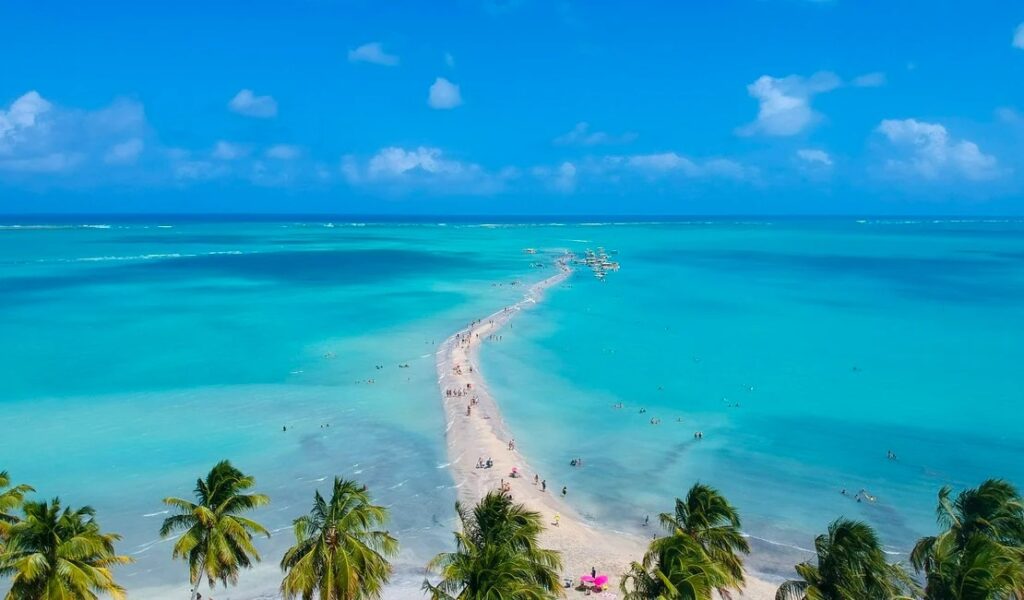For the first time ever, we are able to observe the formation of an “ice finger of death” through some breathtaking footage.

These days it’s rare to uncover a phenomenon completely new to science, one that expands our knowledge of the world in unique and wondrous ways. But just as it happened in the past few years with uncontacted tribes, unseen caves, and sea beasts, the forming of Antarctic brinicles – also known as “ice fingers of death” – was recently introduced to armchair adventurers in the form of some breathtaking footage.
Brinicles are otherworldly, finger-like structures that reach down from the floating sea ice into frigid Antarctic waters. While scientists have been aware of their existence since the 1960s, they are rarely observed in real-time. Ice fingers only occur in specific conditions in Earth’s polar regions, under blocks of floating sea ice, making them not only difficult to track but almost impossible to capture on camera. This is what makes the below footage from BBC’s Frozen Planet series (Season 1, Series 5) so special.
ice finger of death (Tipper – Trenched)” frameborder=”0″ allow=”accelerometer; autoplay; clipboard-write; encrypted-media; gyroscope; picture-in-picture; web-share” allowfullscreen>
Unlike frozen freshwater, ice on the ocean surface is composed of two components. During the freezing process, the water excludes most of the salt, leaving the ice crystal itself relatively pure. However, this leads to the presence of excess salt. As it needs much lower temperatures to freeze, the remaining salty water stays in its liquid form, creating highly saline brine channels within the porous ice block.

A brinicle is formed when the floating sea ice cracks and leaks out the saline water solution into the open ocean below. Since the brine is heavier than the water around it, it sinks down towards the ocean floor while freezing the relatively fresh water it comes into contact with. This process lets the brinicle grow downward, creating that finger-like resemblance.
Dr. Andrew Thurber, one of the few scientists who has seen brinicle growth firsthand, describes a fantastical scene punctuated by downward creeping brinicles. “They look like upside-down cacti that are blown from glass,” he says, “like something from Dr. Suess’s imagination. They’re incredibly delicate and can break with on the slightest touch.”

For nearby sea creatures, however, the fragile ice sheaths hide a deadly weapon: as shown in the video, a brinicle can reach the seafloor and as it grows from this point, it could potentially catch various creatures living at the bottom, such as sea urchins and starfish, freezing them too.
“In areas that used to have the brinicles or underneath very active ones, small pools of brine form that we refer to as black pools of death,” Thurber notes. “They can be quite clear but have the skeletons of many marine animals that have haphazardly wandered into them.”

The scientific study of brinicles is in its early stages, but for the first time ever, we have video evidence of the development of these mysterious icy fingers of death.








 Photographer Finds Locations Of 1960s Postcards To See How They Look Today, And The Difference Is Unbelievable
Photographer Finds Locations Of 1960s Postcards To See How They Look Today, And The Difference Is Unbelievable  Hij zet 3 IKEA kastjes tegen elkaar aan en maakt dit voor zijn vrouw…Wat een gaaf resultaat!!
Hij zet 3 IKEA kastjes tegen elkaar aan en maakt dit voor zijn vrouw…Wat een gaaf resultaat!!  Scientists Discover 512-Year-Old Shark, Which Would Be The Oldest Living Vertebrate On The Planet
Scientists Discover 512-Year-Old Shark, Which Would Be The Oldest Living Vertebrate On The Planet  Hus til salg er kun 22 kvadratmeter – men vent til du ser det indvendigt
Hus til salg er kun 22 kvadratmeter – men vent til du ser det indvendigt  Superknepet – så blir snuskiga ugnsformen som ny igen!
Superknepet – så blir snuskiga ugnsformen som ny igen!  Meteorite That Recently Fell in Somalia Turns Out to Contain Two Minerals Never Before Seen on Earth
Meteorite That Recently Fell in Somalia Turns Out to Contain Two Minerals Never Before Seen on Earth  Nearly Frozen Waves Captured On Camera By Nantucket Photographer
Nearly Frozen Waves Captured On Camera By Nantucket Photographer  It’s Official: Astronomers Have Discovered another Earth
It’s Official: Astronomers Have Discovered another Earth 